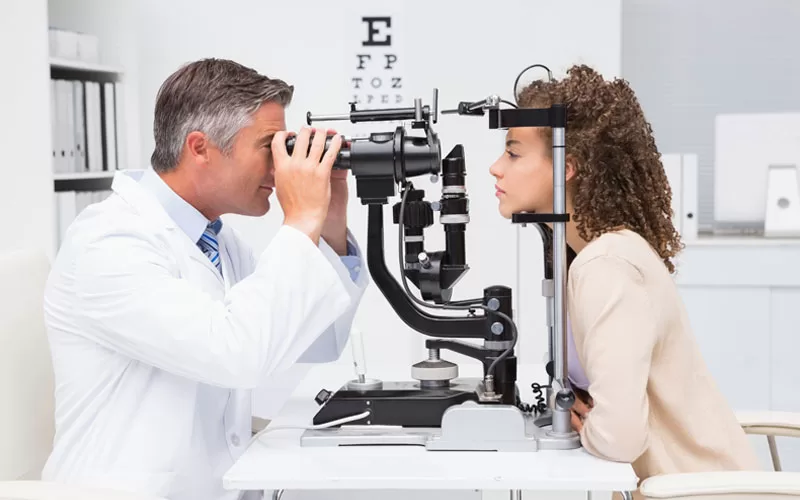
Our eyes do so much for us daily, and it’s easy to take them for granted until we notice something’s a little off. Some people only think about visiting an eye doctor when they need a new prescription, but there are many other reasons to see an optometrist and get your eyes checked. You might be experiencing some changes in your vision or eye health that are more significant than they first appear. Catching these eye issues early can often mean a world of difference. Here are some clear signs it might be time to see an optometrist and book an appointment with an optometrist.
Blurry Vision
Do things seem a bit out of focus lately? It’s one of the most obvious indicators that something might be wrong with your eyes. Blurry vision can mean different things. You might need glasses, or your current prescription may need an update. In some cases, it could signal underlying issues like cataracts, diabetic eye disease, or other serious conditions.
This eye problem doesn’t have to be constant to be a concern. Even if it comes and goes or only affects certain distances, it’s still worth getting an eye exam in Midtown or your local area. In such cases, it’s important to see an optometrist to help you pinpoint the cause and recommend the right solution.
Frequent Headaches
Headaches can happen for all kinds of reasons, and eye strain is one of the common ones. Many people get headaches without realizing they’re linked to vision problems. If you find yourself squinting at screens or struggling to read for long periods, this could be the reason. An optometrist in Midtown or near you can check if a vision problem, like astigmatism or farsightedness, is causing this cranial discomfort. They can rule out vision-related conditions and find the best treatment for relief.
Increased Sensitivity to Light
Sensitivity to light, or photophobia, can happen occasionally if you’re tired or spend too long in front of a bright screen. But if the light starts to bother you more often than usual, there might be an underlying issue. It can be associated with migraines, eye strain, or certain conditions like uveitis or corneal problems. An eye care specialist can assess your visual function and provide management strategies to help you adapt more seamlessly to different lighting scenarios.
Trouble Seeing at Night
Night vision issues aren’t just annoying—they can also be dangerous, especially when it comes to driving. If you’re finding it harder to see street signs or distinguish shapes in the dark, your eyes might be changing. Sure, it’s natural for our vision to decline somewhat as we age. However, it could also indicate conditions like cataracts, vitamin A deficiency, or even early signs of glaucoma. If you notice such issues, it’s crucial to see an optometrist. Your optometrist can evaluate your night vision and offer methods to make nighttime visibility safer and clearer.
Seeing Floaters or Flashes
Floaters are those small specks or strands that float across your field of vision. While they’re usually harmless and common, a sudden increase in floaters, especially if accompanied by flashes of light, can cause significant concern. This might indicate a retinal detachment, which is an issue that requires immediate attention. If you notice any substantial change in your floaters or begin seeing flashes, make it a priority to see an eye professional as soon as possible.

Dry or Irritated Eyes
Dry eyes can be uncomfortable, causing itching, burning, or a gritty sensation. Sometimes, this can be due to environmental factors, like dry air or prolonged screen use. However, if you’re constantly dealing with dryness, it might be due to a condition known as dry eye syndrome, where your eyes aren’t producing enough tears or the right kind of tears. An eye doctor can help manage dry eyes with treatments, eye drops, or lifestyle adjustments to reduce the irritation.
Trouble Reading Small Print
You used to love reading books and browsing your phone comfortably. But lately, you’ve found yourself holding them farther away just to make out the words. Sounds strange? It could be a sign of presbyopia, a condition that affects nearly everyone as they age. Though it’s a natural part of the aging process, an optometrist can greatly assist. Reading glasses or progressive contact lenses can make reading small print much easier and reduce eye strain. See an optometrist to find the best solution.
Just a note: presbyopia typically develops in adults over 40. If you’re not yet in this age range and are still experiencing trouble with close-up vision, it might be due to another vision issue, and an eye exam could identify the root cause.
Recent Changes in Eye Color
Every eye has its unique color, ranging from shades of brown, blue, green, and gray, determined by the amount and type of pigments in the iris. However, if you’ve noticed recent changes in your eye color, it’s best not to ignore them. This should warrant attention from an eye specialist. Therefore, it’s imperative to see an optometrist. A visit to an optometrist will allow for a thorough examination to determine if the changes in your eye color are related to a systemic health issue that requires attention. Early detection and treatment are key to maintaining eye health and preventing potential complications.
Wrapping Up
Your eyes are a powerful yet sensitive part of your health, and taking care of them can make a huge difference in your quality of life. Ignoring signs can lead to more severe problems down the line, so it’s best not to wait. Regular check-ups with an optometrist are one of the best things you can do to preserve your eye health and visual function. Keep in mind that a simple visit to see an optometrist is all it takes to protect your vision for years to come.
Leave a Reply